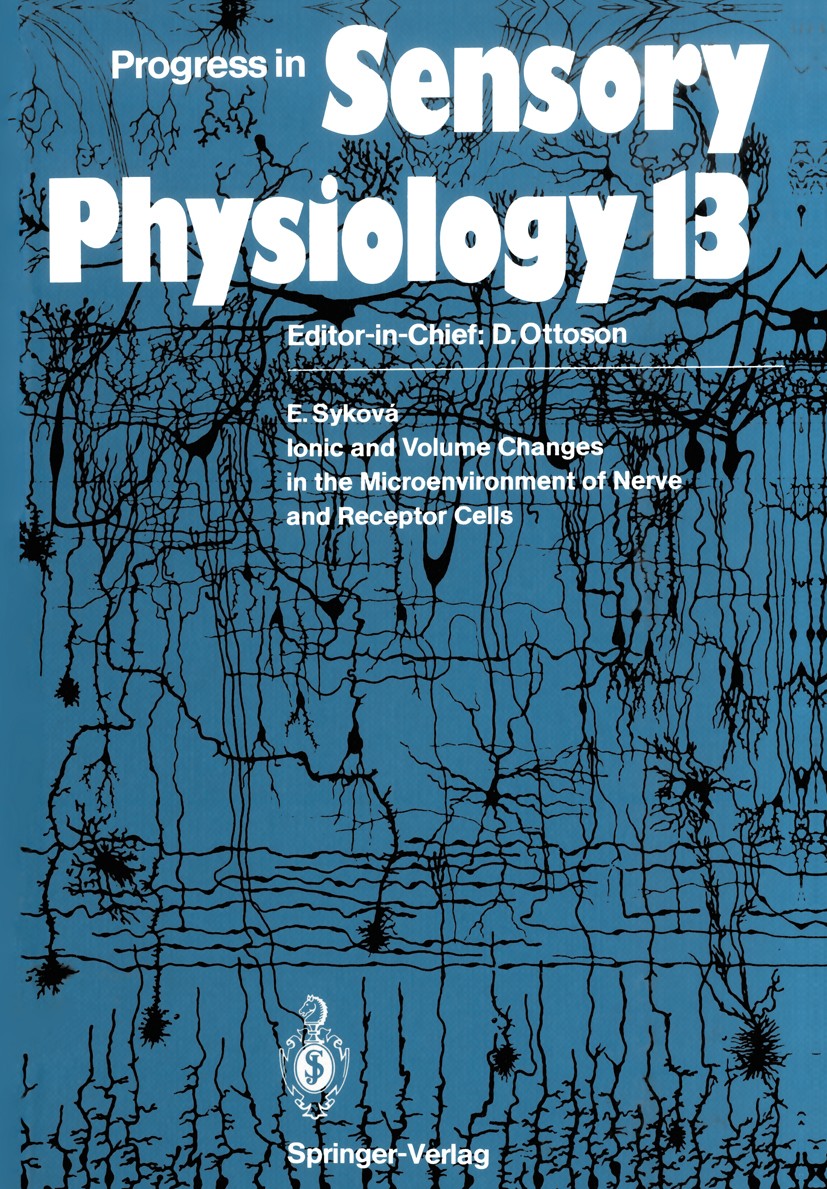| 书目名称 | Ionic and Volume Changes in the Microenvironment of Nerve and Receptor Cells |
| 编辑 | Eva Sykové |
| 视频video | http://file.papertrans.cn/476/475227/475227.mp4 |
| 丛书名称 | Progress in Sensory Physiology |
| 图书封面 |  |
| 描述 | Stability of the internal environment in which neuronal elements are situated is unquestionably an important prerequisite for the effective transmission of information in the nervous system. During the past decade our knowledge on the microenvironment of nerve cells has expanded. The conception that the microenvironment of neurones comprises a fluid with a relatively simple and stable composition is no longer accepted; the microenvironment is now envisaged as a dynamic structure whose composition, shape, and volume changes, thereby significantly influencing neuronal function and the trans mission of information in the nervous system. The modern conception of the neuronal microenvironment is based on the results of research over the last 20 years. The extracellular space (ECS) is comprehended not only as a relatively stable microenvironment containing neurones and glial cells (Bernard 1878), but also as a channel for communica tion between them. The close proximity of the neuronal elements in the CNS and the narrowness of the intercellular spaces provides a basis not only for interaction between the elements themselves, but also between the elements and their microenvironment. Sub |
| 出版日期 | Book 1992 |
| 关键词 | Sinnesorgane; brain; cells; cortex; depression; epilepsy; glial cells; hypoxia; neurons; neuropeptides; neurop |
| 版次 | 1 |
| doi | https://doi.org/10.1007/978-3-642-76937-5 |
| isbn_softcover | 978-3-642-76939-9 |
| isbn_ebook | 978-3-642-76937-5Series ISSN 0721-9156 |
| issn_series | 0721-9156 |
| copyright | Springer-Verlag Berlin Heidelberg 1992 |
 |Archiver|手机版|小黑屋|
派博传思国际
( 京公网安备110108008328)
GMT+8, 2025-11-19 21:08
|Archiver|手机版|小黑屋|
派博传思国际
( 京公网安备110108008328)
GMT+8, 2025-11-19 21:08


